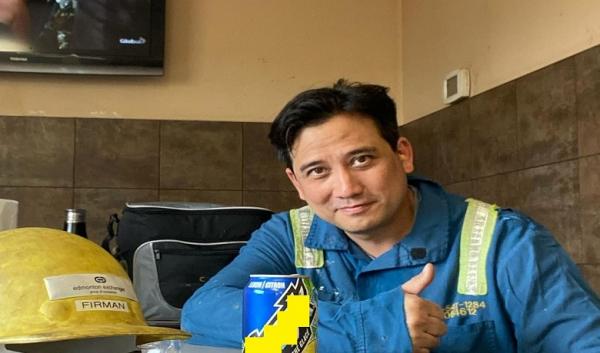- Charukesi Ramadurai
- BBC trip
image sources, Sudipta Das/Alamy
In the bustling city of Kolkata, a small ethnic Hakka Chinese community has lived quietly for over a century.
When Janice Lee went on vacation to China, she realized she couldn’t wait for it to be over.
“I didn’t speak the language, I didn’t like the food and I felt so lost,” she recalls.
Not being able to adapt to a foreign culture might not seem strange – the point is that Lee himself is from China.
When he told me, “I only feel comfortable when I finally come back,” he was referring to his home in Kolkata.
Lee is of Chinese Indian descent and is a fifth generation member of the Hakka ethnic community. He worked at Pou Chong Foods, a company his grandfather started in 1958 to provide Chinese sauce and noodles to other Chinese people.
India’s first Chinese immigrant, Tong Ah Chew (Atchewaccording to British records), arrived in Kolkata with a large quantity of tea in 1778 and established a sugar factory near the town.
As an eastern port, Kolkata is India’s closest entry point from China and East Asia, making it the only Chinese community in India.
The city’s Chinese population soared to over 20,000 in the early 20th century when many fled China to escape civil war and conflict with Japan.
In the city, Chinese immigrants find work in the tanning and leather industries.
Here they married and mixed with the locals, learning to speak Bengali and Hindi fluently.
Lee explains that all of this is inseparable from the first immigrant, Ah Chew – or “chinese“in many Indian languages, including Bengali, which was later applied to the Chinese there, which became a popular diplomatic slogan in the 1950s”,Hindi Chini bhai bhai(India and China are brothers). The original Chinatown in Kolkata is still called Cheenapara.
image sources, Neil McAllister / Alamy
Tiretta Bazar, also called Old Chinatown, has been around since the 1800s.
Today, there are only 2,000 ethnic Chinese people left in Kolkata.
But their culture can be seen everywhere in the Tiretta (also called Tiretti) Bazaar and Tangra district: in street vendors, Taoist temples and community clubs, as well as the annual lion dance to welcome Chinese New Year.
While cities like San Francisco and London are known for their Chinatown, Kolkata’s Chinatown remains under the radar.
And while India still lacks another Chinatown, Kolkata has not one, but two Chinatown locations: The original community of Tiretta Bazar dating back to the 1800s; and a colony later established at Tangra in the early 1900s.
Kolkata blogger Rangan Datta, who has been documenting local heritage for years, says most residents were forced to relocate to swampy areas that were once outside the main city when polluting tanning factories were moved from Tiretta Bazaar in central Kolkata. .
“The Chinese first settled in the area between Bengali towns and European cities, where other foreigners like Armenians and Greeks lived, as well as non-Bengalis like Marwaris and Parsis. All came to Kolkata for business or business,” he said. .
image sources, Charukesi Ramadura
The Anglo-Indian community lives in red brick apartments “Bow Barracks”, not far from Tiretta Bazar.
Indeed, the Bow Barracks (home to the Anglo-Indian community), the Armenian Church and the Parsi Fire Temple are all in this multicultural neighborhood.
Even so, not everyone in the community lives in Tiretta Bazar, says chief Peter Tseng, a third-generation Chinese from Kolkata, who grew up outside the area and remembers visiting his cousin who lived there. .
Kolkata resident Swati Mishra, who leads the community arts project at Tiretta Bazar, which aims to solicit local participation to rejuvenate their public spaces, says: “Unlike a typical Chinatown, Tiretta Bazar is not a community closed.
“The Chinese lived close to the rest of the community from the start, and some of them speak better Bengali than I do.”
But Tangra, which was founded later, has doors with ornaments typical of Chinatowns around the world.
Food is one of the ways the Chinese community has managed to bridge the gap with the local population.
India’s first Chinese restaurant was founded in Kolkata by the local Hakkan community, and over time this Sino-Indian cuisine – or “Chindian” – spread throughout the country.
To this day, Chinese cuisine remains their greatest gift to India, a favorite food across the country and one of India’s staple foods, found everywhere from street carts to restaurants. gastronomic.
image sources, Getty Images
Gobi Manchurian is a Chinese Indian dish enjoyed all over India.
Tseng, who grew up with what he calls the “sweet taste” of traditional Hakka food at home, says cooks have to improvise to please Indian palates.
“They add green chilies, onions, coriander powder and even garam masala…depending on individual tastes,” he says.
Adding local spices and sauces has resulted in dishes such as chilli chicken (with dark soy sauce) and Manchurian gobi (fried cauliflower florets topped with cornstarch and spices), totally unheard of in mainland China.
Pou Chong food also gave rise to Indian-style sauces such as mint (mint), case (Bengali version of mustard) and chili chicken sauce – all popular with Indians in Kolkata as well as Chinese locals.
Sunday morning Chinese breakfast on Sun-Yat Sen Road in Tiretta Bazar is a cherished ritual for many Kolkata residents, who crave the fresh dumplings, dumplings and noodles served at the roadside stalls.
At 5:30 a.m., the vendor is ready with a large cylindrical aluminum cart filled with pork buns, chicken momos, and fishball soup.
Meanwhile, Tangra is famous for its Chinese restaurants such as Beijing, Ah Leung, Kim Ling and Golden Joy (a favorite of the Tseng family).
“Kolkata China is famous all over the world, there’s even a restaurant in New York,” Lee said, referring to Tangra which serves “Indian-style Chinese food.”
Although it has been part of India for more than a century, Kolkata’s Chinese community is rapidly shrinking and the neighborhood itself is in danger, according to the World Monument Fund.
Lee spoke of the challenge, namely the presence of luxury housing in the heart of a densely populated city, marked by rampant “land grabs” and land disputes.
image sources, Charukesi Ramadurai
Sunday morning Chinese breakfast at Tiretta Bazar is a ritual enjoyed by many Kolkata residents.
The decline began with the outbreak of the Indochina War in 1962, and even those who have lived here for generations are treated with suspicion and hostility.
Hundreds of Chinese immigrants were arrested without any basis and sent to internment camps in Rajasthan on the other side of the country, where they suffered such harsh treatment.
After returning to Kolkata, many decide to move to other countries where they have family and friends.
Since then, hundreds of tanneries and leather factories have also closed on government orders, leading to the loss of their livelihoods, prompting even more people to flee to Australia, the United States and Canada.
In recent decades, young people from India’s Chinese community – like other communities in India – have moved abroad in search of better education and job opportunities.
Datta said most of his Chinese friends at school now live in Toronto, while Tseng said only those with established businesses stayed in Kolkata and were pressured by his children to move abroad with them. .
Lee himself bears no scars from society’s collective trauma, choosing instead to make the best of his life here.
“We are a small, tight-knit community. We still follow our customs and come together for celebrations like Chinese New Year,” he said.
Tseng now works in Chennai and visits his parents in Kolkata once a year for the same festival.
Her voice trailed off as she said, “As long as we have family there, we will maintain our culture…”
image sources, Sudipta Das/Alamy
Chinese culture can still be seen in the annual lion dance to welcome Chinese New Year.
According to Lee, unification went both ways, with Bengali traders learning to speak Hakka and selling Chinese vegetables such as bok choy, kailan and mustard greens.
Above all, he says, he loves living in India and feels at home here.
“I can’t live without mishti doi and rasgulla,” he laughs, referring to the Bengali sweets that have become part of his life.

“Amateur problem solver. Hipster-friendly alcohol lover. Beer buff. Infuriatingly humble tv geek.”






